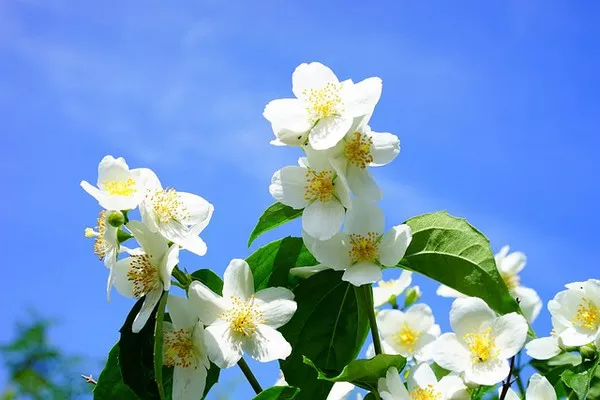Flowers have been an enduring symbol of beauty and emotion throughout history, gracing occasions with their vibrant colors and delicate fragrances. Bouquets, in particular, serve as a visual expression of sentiments, ranging from love and celebration to condolences and well-wishing. In this article, we delve into the world of common flowers found in bouquets, exploring their significance, cultural connotations, and the artistry behind their selection.
Roses: The Timeless Emissaries of Love
Undoubtedly, roses stand as the epitome of love and passion in the realm of flowers. With their velvety petals and enchanting fragrance, roses have been a classic choice for expressing romantic emotions. The color of the rose further adds nuance to its meaning – red for deep love, white for purity, and yellow for friendship. Beyond romance, roses also find their place in bouquets commemorating various celebrations.
Lilies: Elegance and Purity in Bloom
Lilies, characterized by their regal appearance and captivating scent, bring an air of elegance to bouquets. Associated with purity and renewal, lilies often find their place in wedding arrangements, symbolizing the blossoming of a new chapter in life. With their diverse varieties, including the stately white Casablanca lily and the vibrant Asiatic lily, these flowers offer versatility in both aesthetic and meaning.
Tulips: Springtime Joy and Renewal
Tulips, with their graceful petals and slender stems, are often associated with the arrival of spring. Symbolizing new beginnings and fresh starts, tulips are frequently included in bouquets to convey messages of hope and positivity. The wide range of tulip colors, from soft pastels to bold hues, allows for creative and meaningful arrangements, making them a favorite for various occasions.
Daisies: Whimsical Charm and Innocence
Daisies, with their simple yet cheerful appearance, evoke feelings of innocence and joy. These flowers, often found in wild meadows, bring a touch of the whimsical to bouquets. Daisies symbolize purity and new beginnings, making them popular choices for weddings and celebrations heralding the start of a new journey. Their uncomplicated charm adds a delightful element to any arrangement.
Peonies: Opulence and Romance Unveiled
Peonies, known for their lush and opulent blooms, are synonymous with romance and prosperity. These extravagant flowers, often featured in weddings, symbolize good fortune and a happy marriage. With their large, ruffled petals and captivating fragrance, peonies make a statement in bouquets, conveying a sense of luxury and timeless beauty.
Sunflowers: Radiance and Positivity
Sunflowers, with their vibrant yellow petals and distinctive seed heads, bring a burst of radiance and positivity to bouquets. Symbolizing loyalty and adoration, sunflowers are a popular choice for expressing friendship and admiration. Their bold appearance and association with the sun make them ideal for adding a touch of warmth to any bouquet, especially during celebratory occasions.
Orchids: Exotic Allure and Delicate Grace
Orchids, with their exotic allure and delicate beauty, add a touch of sophistication to bouquets. Representing love, beauty, and strength, orchids come in a variety of shapes and colors, allowing for artistic and unique arrangements. Whether cascading down in a bridal bouquet or adorning a centerpiece, orchids contribute an air of refinement and elegance to any floral ensemble.
Carnations: Symbolic Richness and Versatility
Carnations, with their frilly petals and spicy fragrance, are known for their symbolic richness and versatility. Available in a spectrum of colors, each with its own meaning, carnations are often chosen for bouquets expressing sentiments ranging from admiration to remembrance. Their durability and long-lasting nature make them a practical yet beautiful choice for various occasions.
Hydrangeas: Abundance and Gratitude
Hydrangeas, with their voluminous clusters of blossoms, symbolize abundance and gratitude. Often chosen for weddings and celebrations, hydrangeas convey heartfelt emotions and appreciation. The ability to change color depending on soil acidity adds an intriguing dimension to these flowers, allowing for diverse and captivating bouquets that capture the essence of the moment.
Baby’s Breath: Delicate Accents of Innocence
Baby’s Breath, with its tiny, delicate flowers and airy appearance, serves as a perfect accent in bouquets. Symbolizing innocence and purity, this unassuming flower adds a touch of grace and charm to any arrangement. Often used as a filler to complement more prominent blooms, Baby’s Breath brings a lightness and ethereal quality to bouquets, making them visually enchanting.
Conclusion
In the world of floristry, the selection of flowers for bouquets involves a careful consideration of both aesthetics and symbolism. Each bloom contributes its unique charm and meaning, creating a harmonious ensemble that speaks volumes without uttering a word. Whether it’s the timeless allure of roses, the exotic grace of orchids, or the whimsical charm of daisies, the art of crafting bouquets lies in the thoughtful combination of these common flowers. As we continue to celebrate life’s milestones and express our deepest emotions through flowers, the language of blooms remains a timeless and universal way to convey sentiments with grace and beauty.


